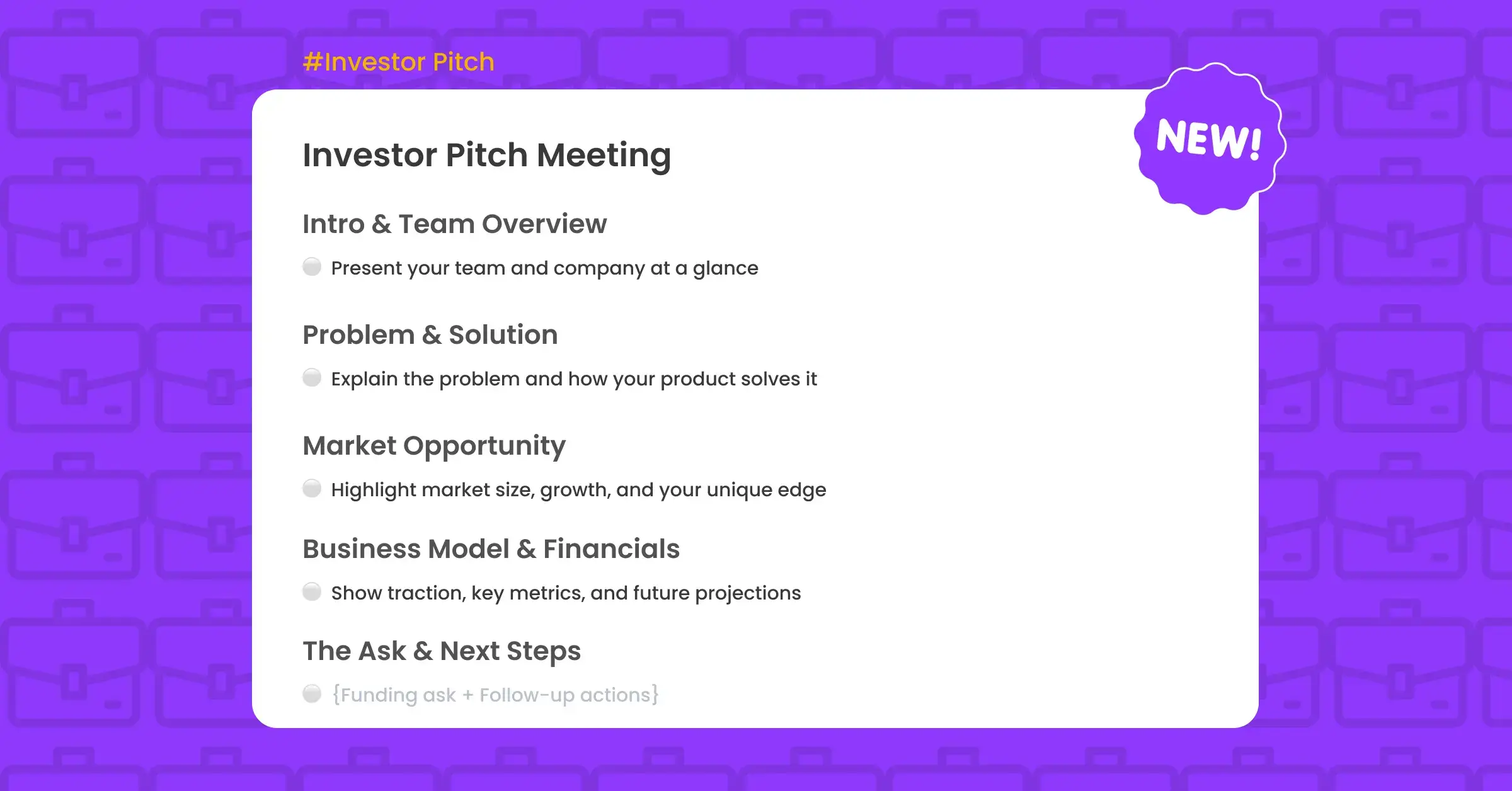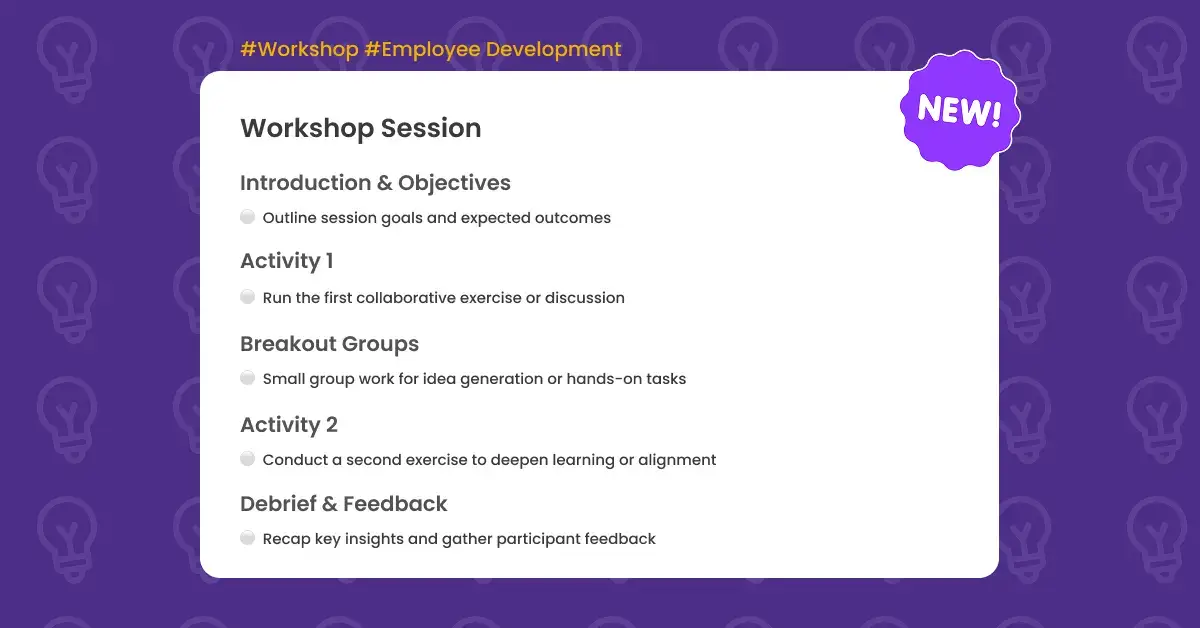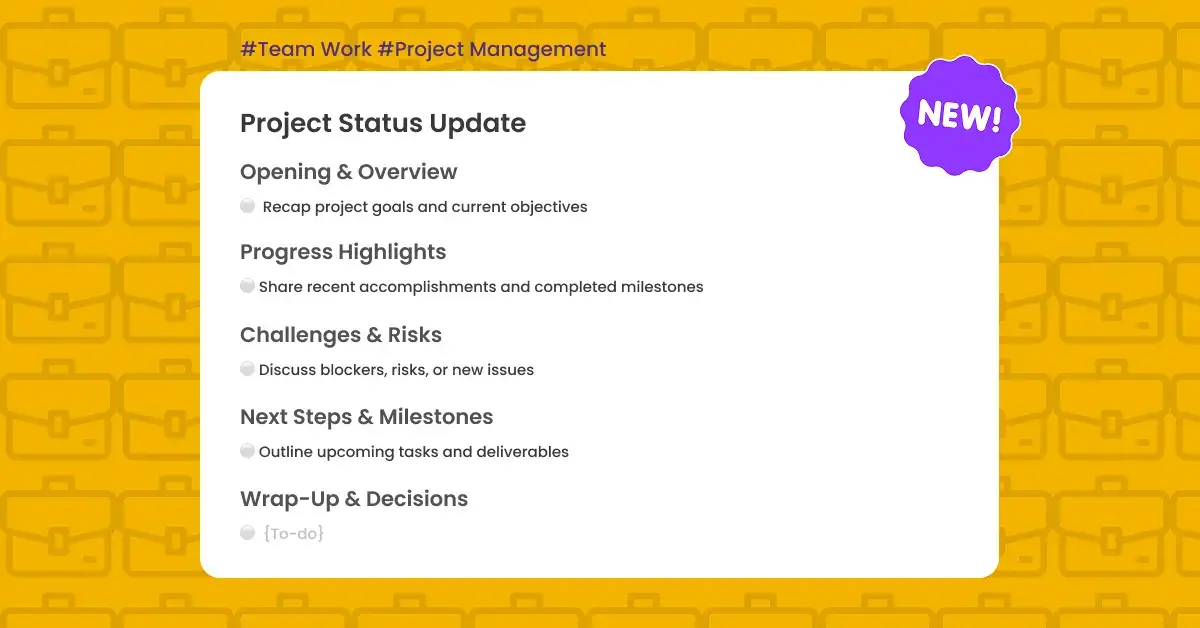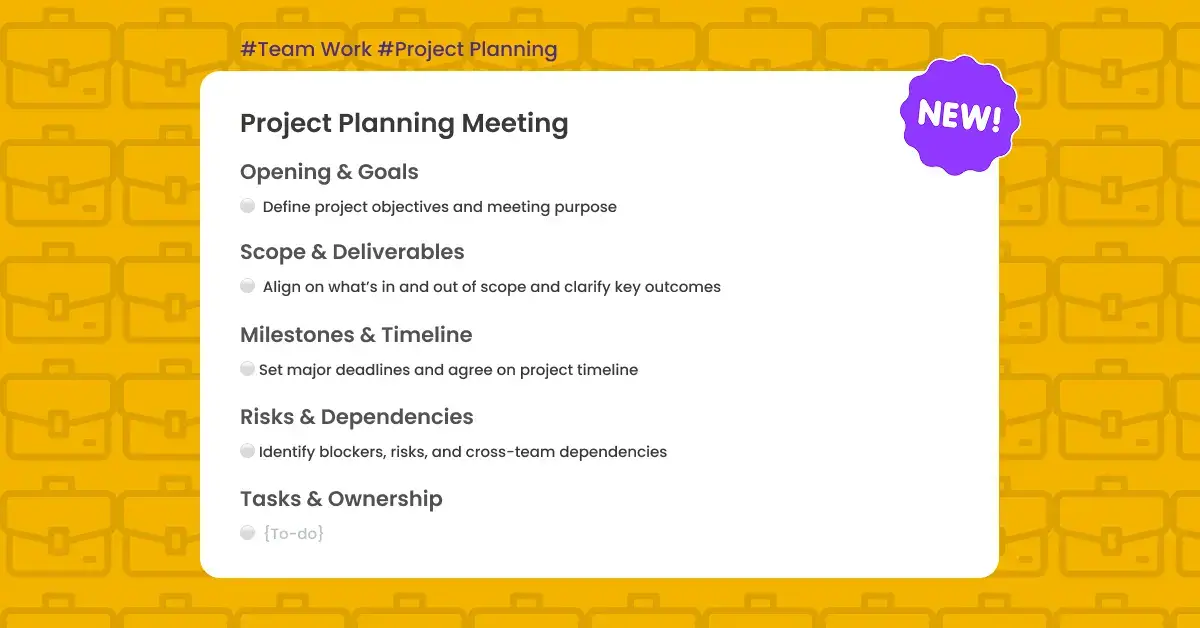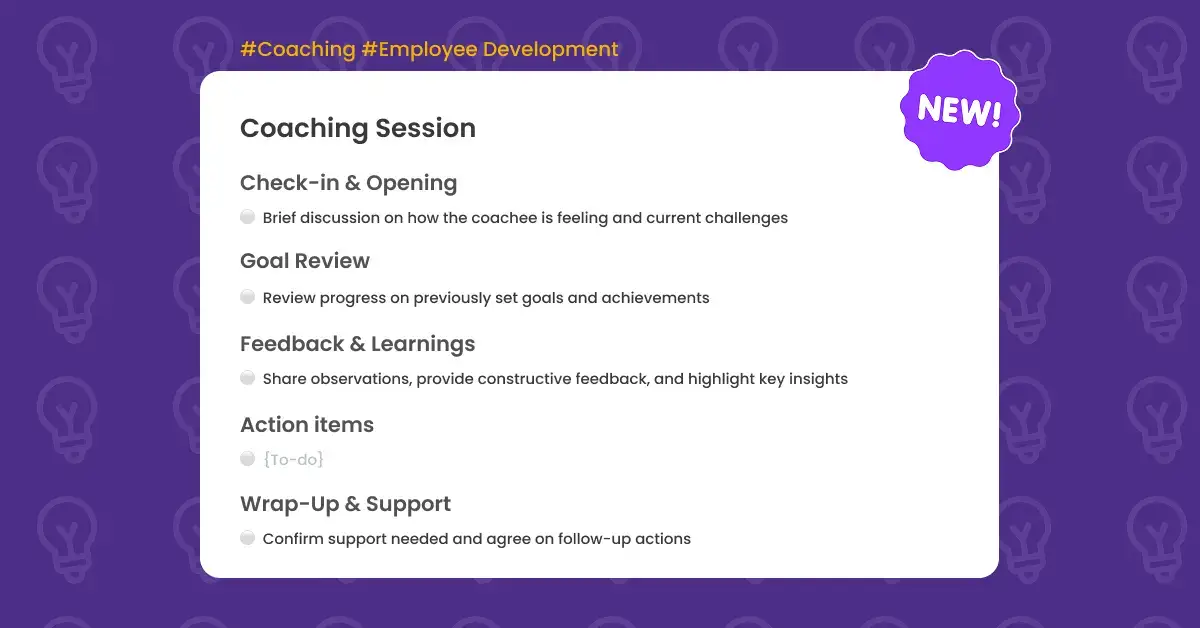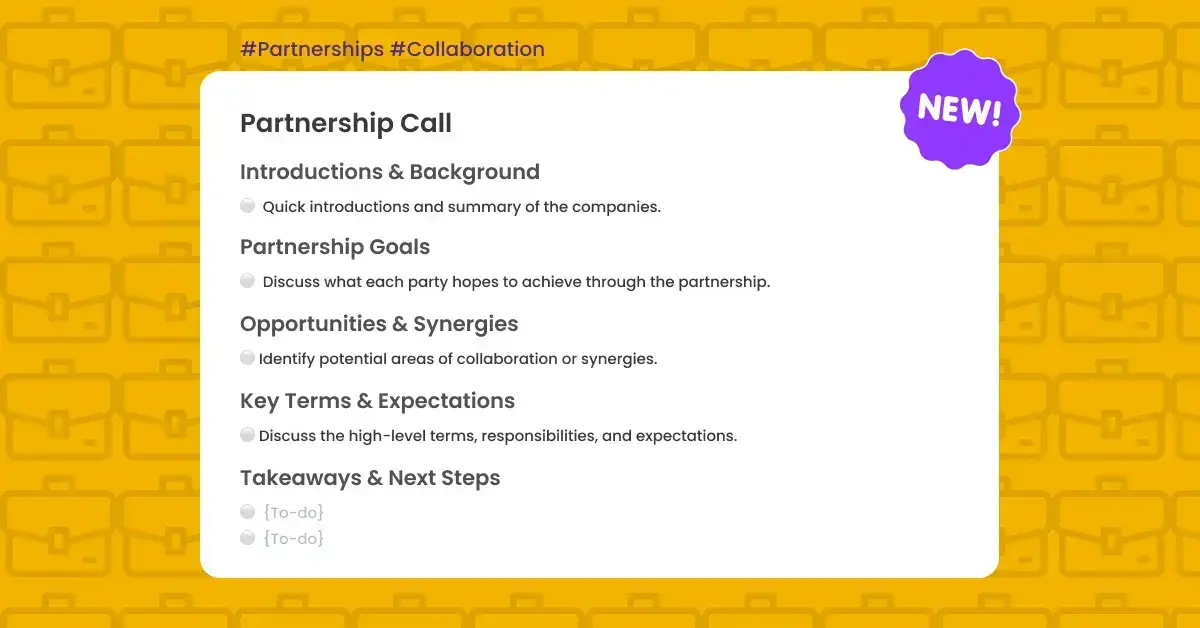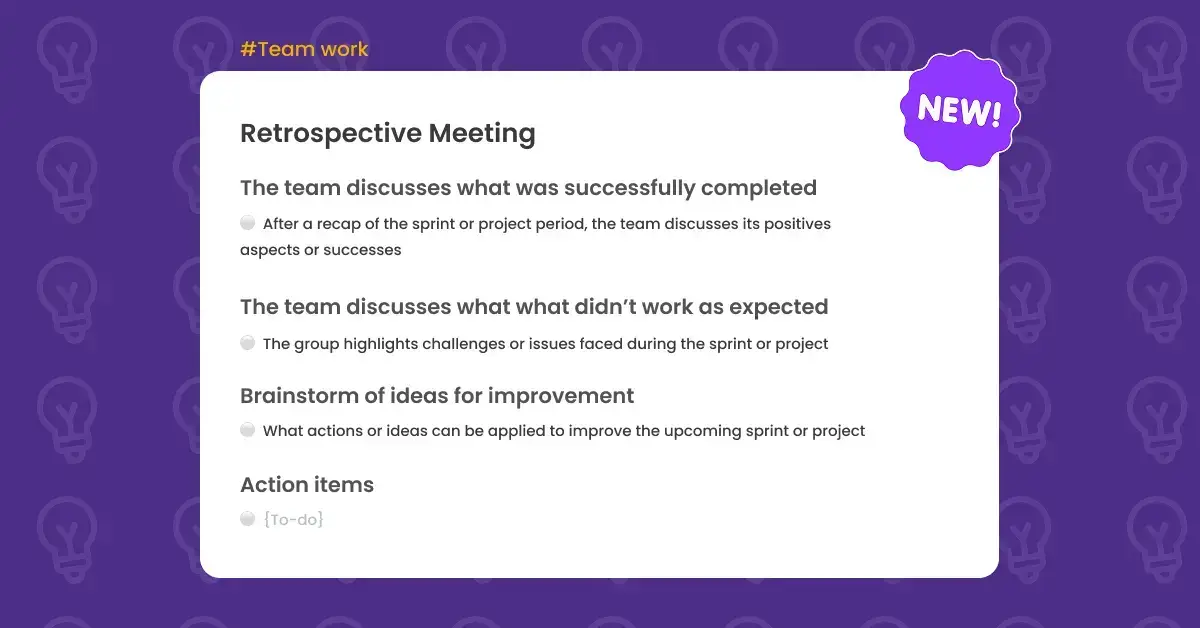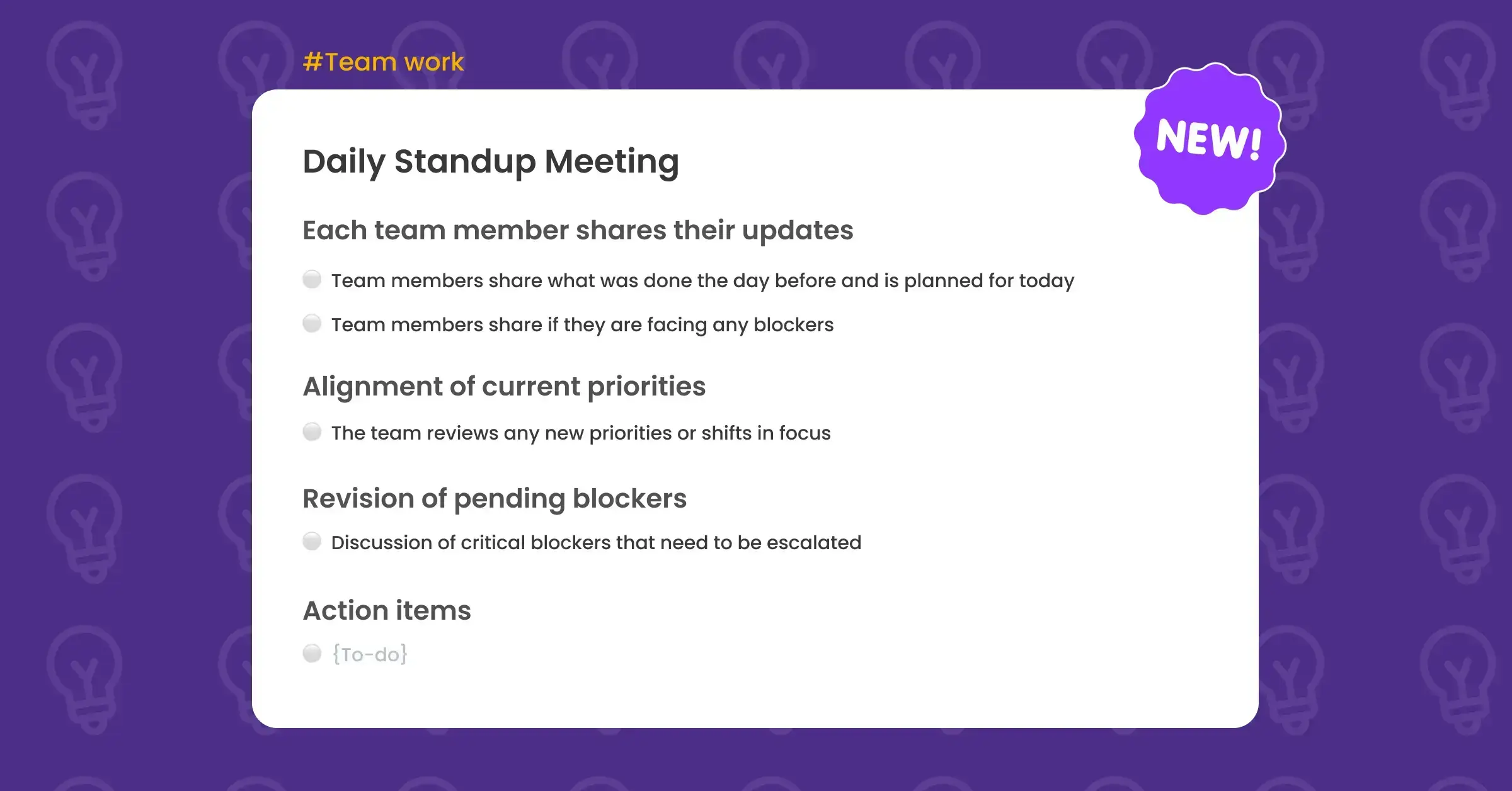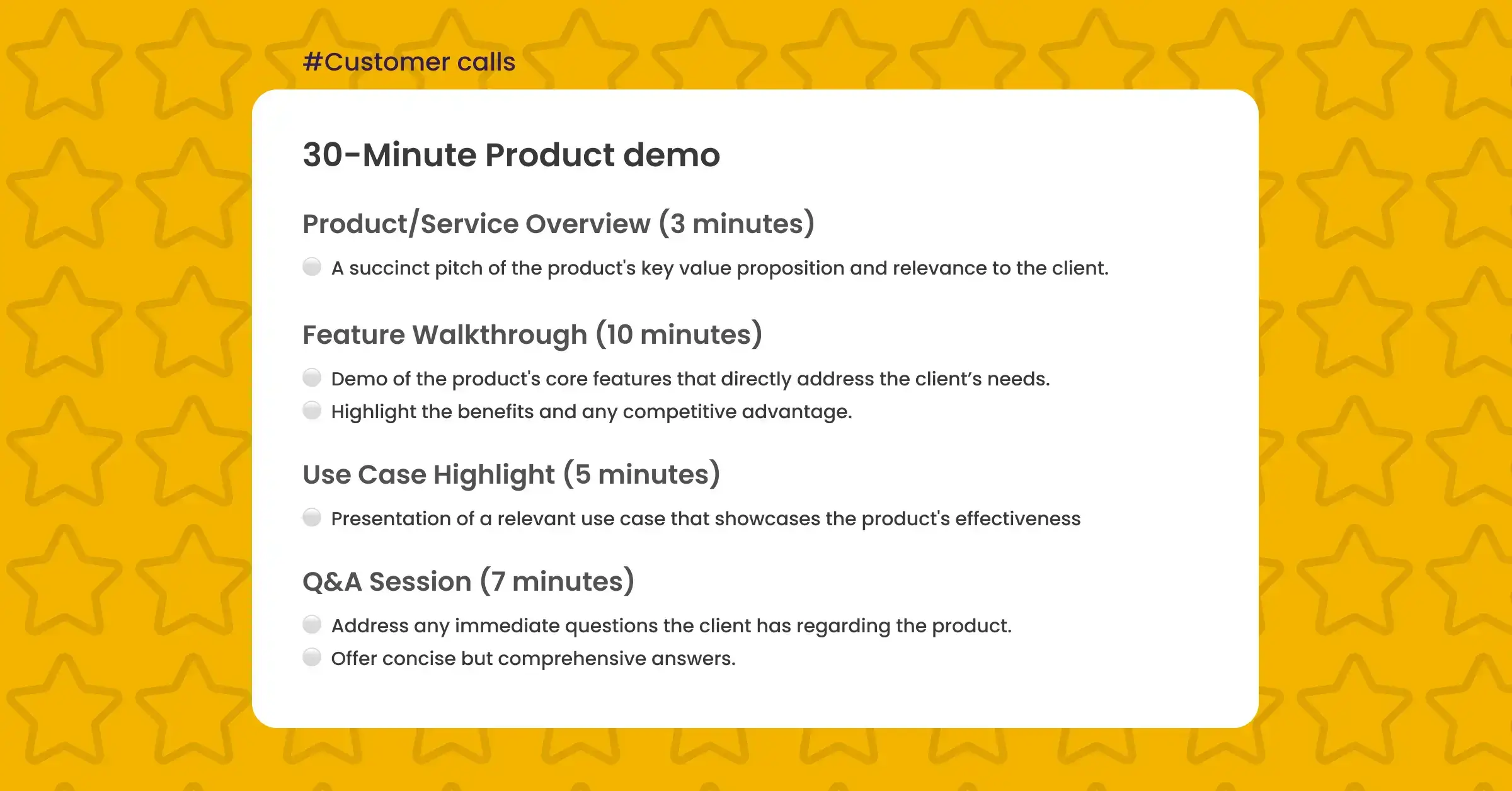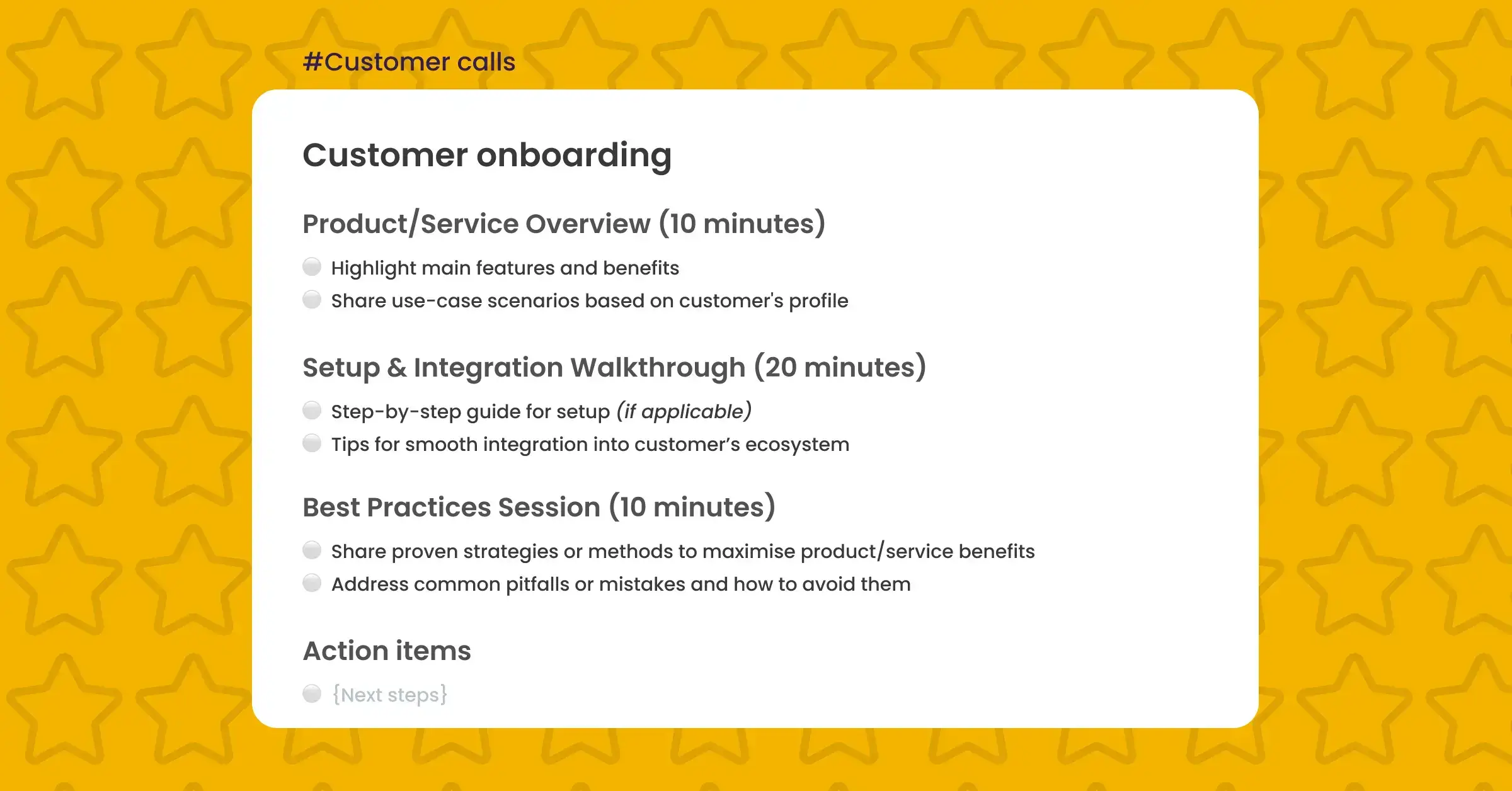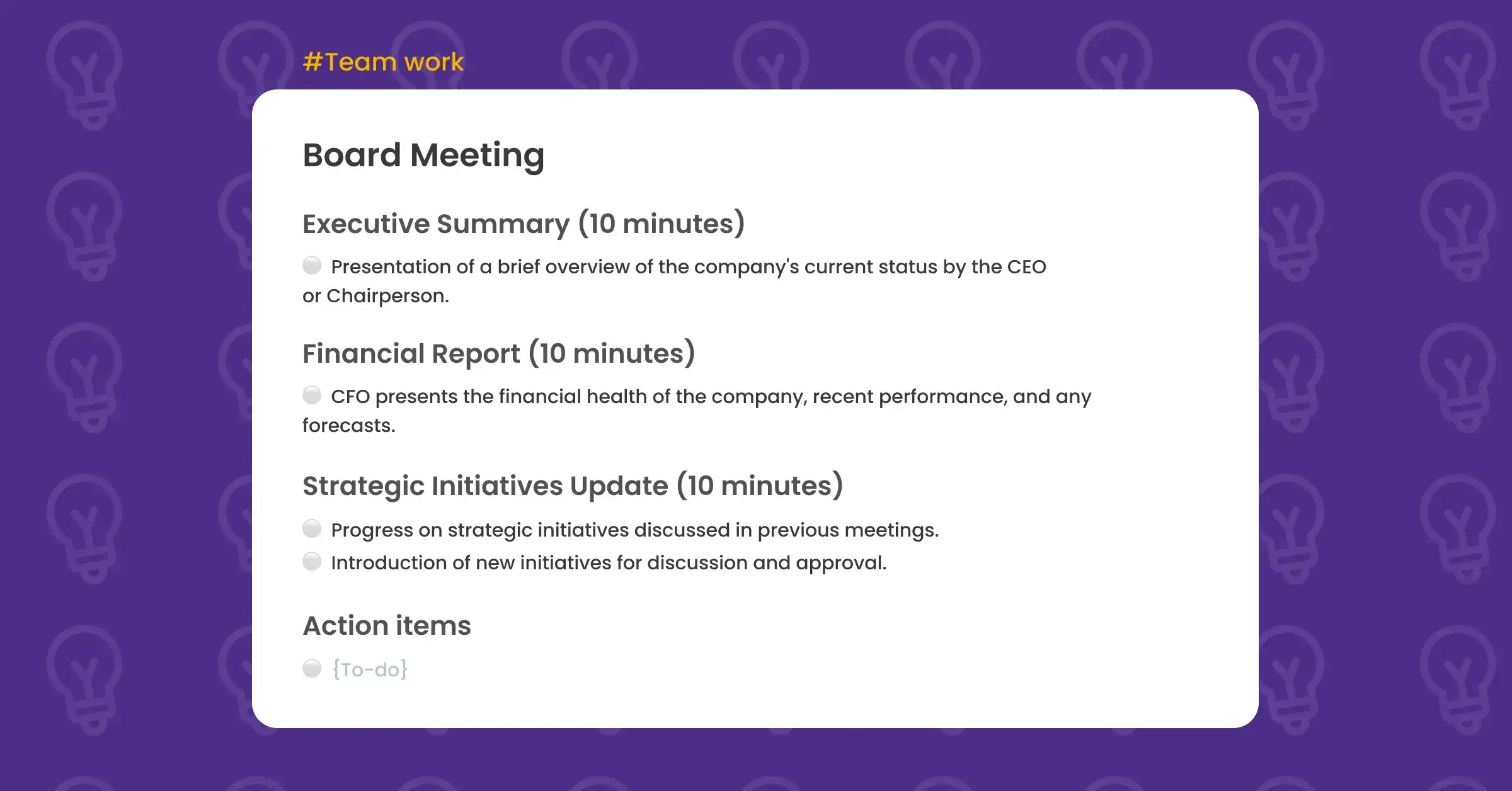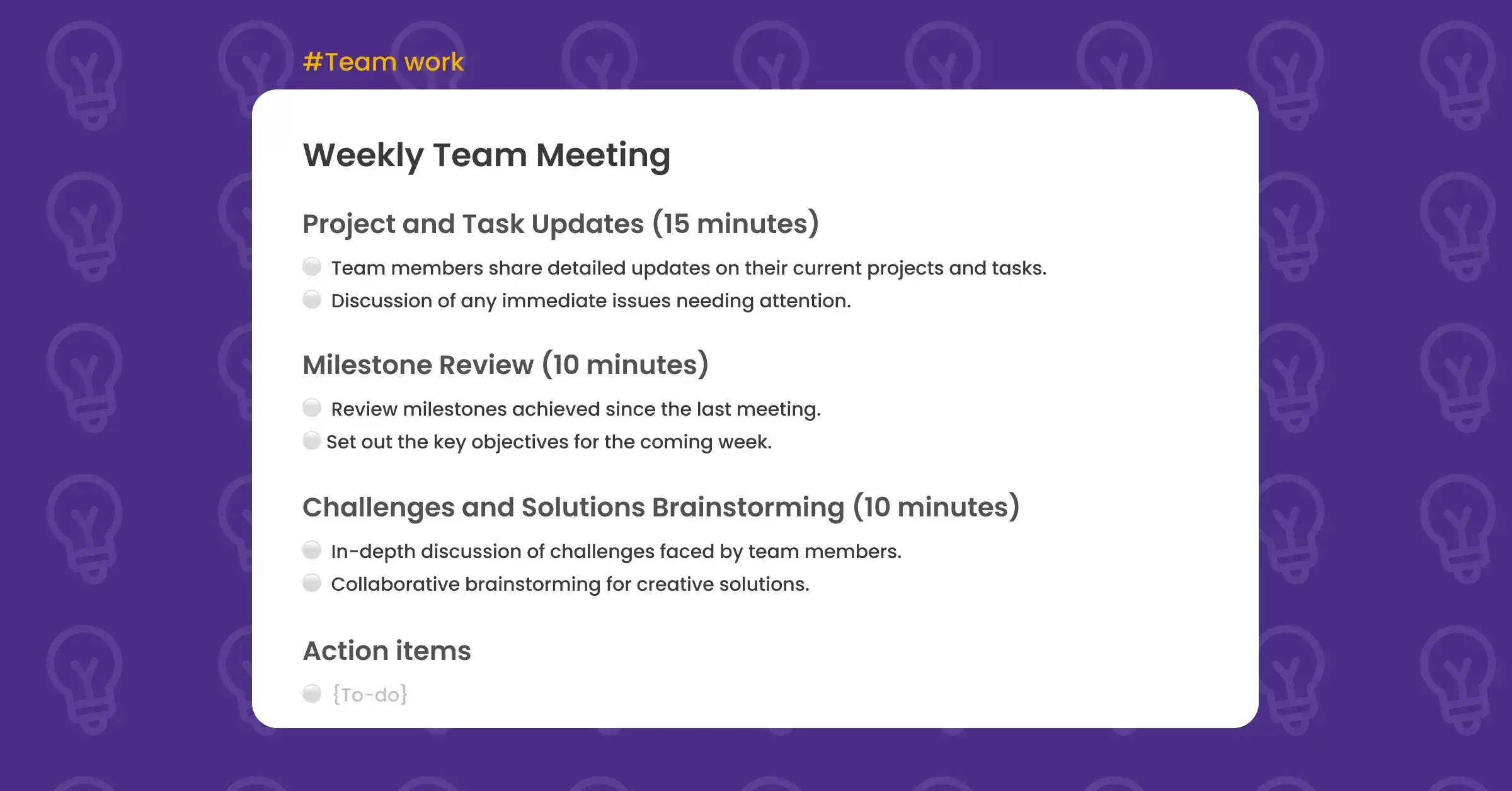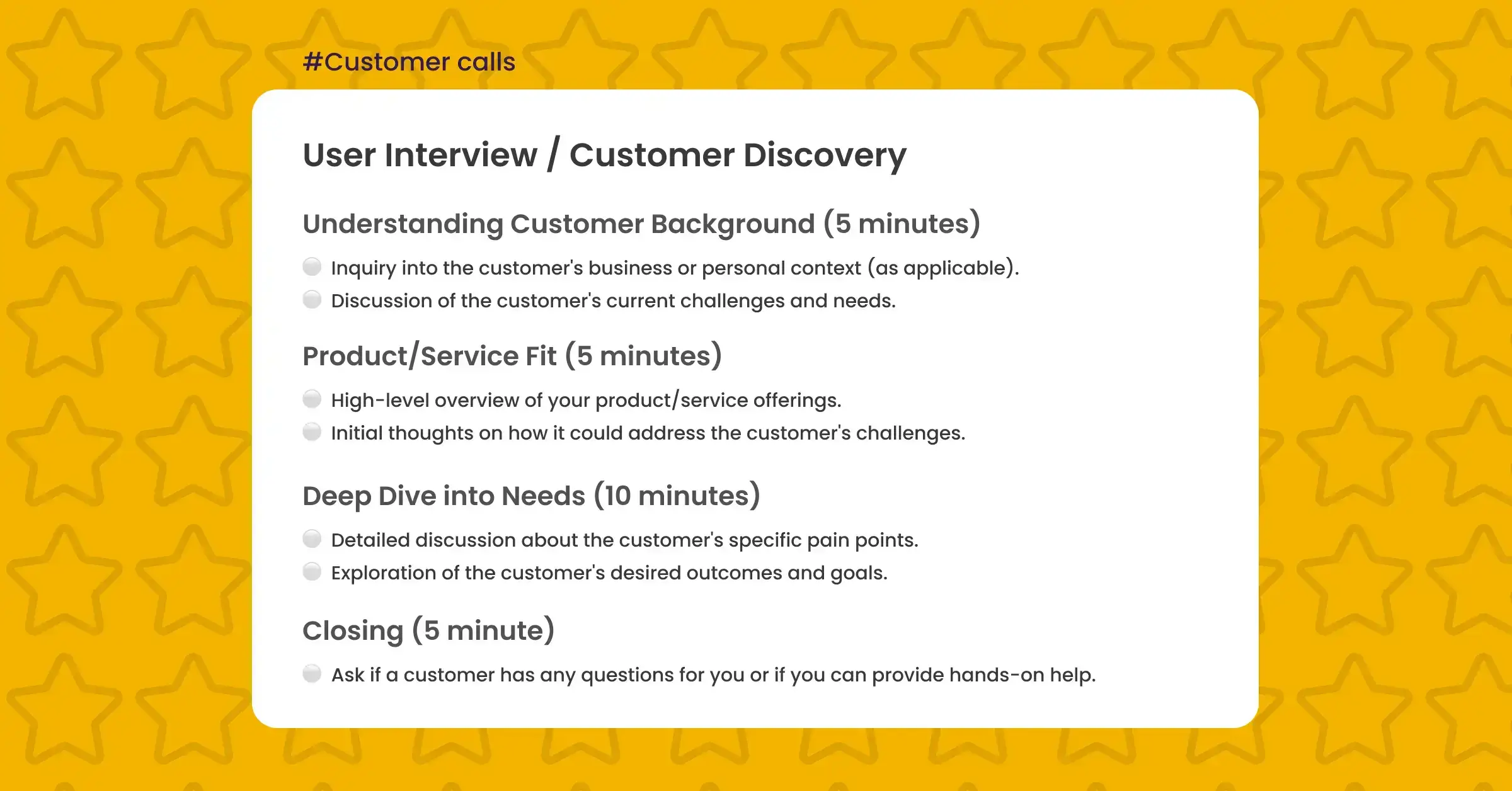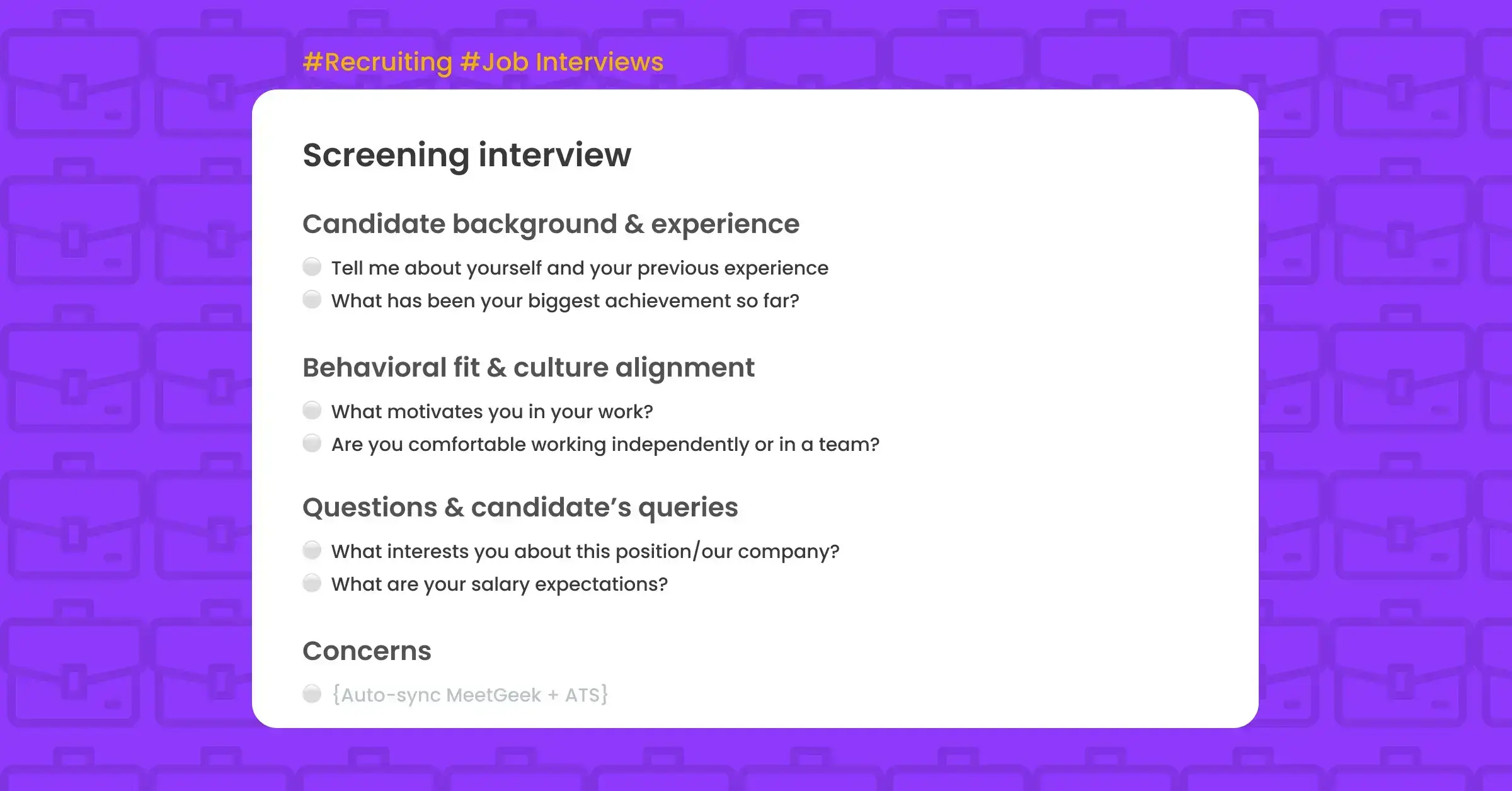Brainstorming Session
This Brainstorming Session template can be used to generate and capture new ideas during team discussions aimed at solving a problem.
Sign inBrainstorming Session Template

About this template
Brainstorming is a team activity that involves generating ideas and solutions for a particular problem or challenge.
Before you start the brainstorm, you should first identify the problem or challenge you want to tackle. Then, gather a diverse group of people who can provide different perspectives and ideas. Set clear guidelines for the session, including any time limits or ground rules. Encourage participants to share their ideas freely, and avoid criticism or evaluation during the initial idea generation phase. Finally, prioritize and evaluate the ideas generated during the session to determine the best course of action.
Important: To create a successful brainstorming session it often requirea preparation. So we highly suggest notify your team in advance about the project and context, so they have time to research the topic and come up with some ideas already before the session.
This project brainstorming template helps you to structure the conversation, record & transcribe it, and automatically detect key ideas and insights that we will tag for you.
Brainstorming session template agenda
Welcome and Introduction (5 minutes)
- Welcome all participants to the brainstorming meeting.
- Briefly explain the meeting objectives.
Review of the Challenge or Opportunity (10 minutes)
- Share background information and any relevant facts.
- Highlight the specific challenge or opportunity at hand.
Brainstorming Guidelines (5 minutes)
- Remind participants of the brainstorming rules, such as no criticism and open-mindedness.
Idea Generation (20 minutes)
- Encourage participants to share their creative ideas related to [insert topic].
- Record ideas on a whiteboard or digital platform.
Discussion and Clarification (15 minutes)
- Allow for questions and discussions on the proposed ideas.
- Encourage participants to build upon each other's ideas.
Prioritization (10 minutes)
- Discuss criteria for evaluating and prioritizing ideas.
- Have participants vote on the most promising ideas.
Decision on Next Steps (10 minutes)
- Decide on the ideas to pursue further.
- Assign responsibilities and due dates for selected ideas.
Closing Remarks (5 minutes)
- Express appreciation to participants for their contributions.
- Announce the date and time of any follow-up meetings or steps.
The screening interview template includes:
- Pre-filled agenda (editable)
- Highlights (aka, tags): #key_questions, #ideas, #opportunities, #roadblocks, #facts
- Custom dictionary
- Meeting KPIs: Collaborative spirit, Depth of discussion, Diversity of thought, Idea volume, Call sentiment, Participation, Talk ratio, etc.
What types of meetings can I use this template for?
- project brainstorming
- business brainstorming
- marketing brainstorming
- kickoff meeting
- operational review meeting
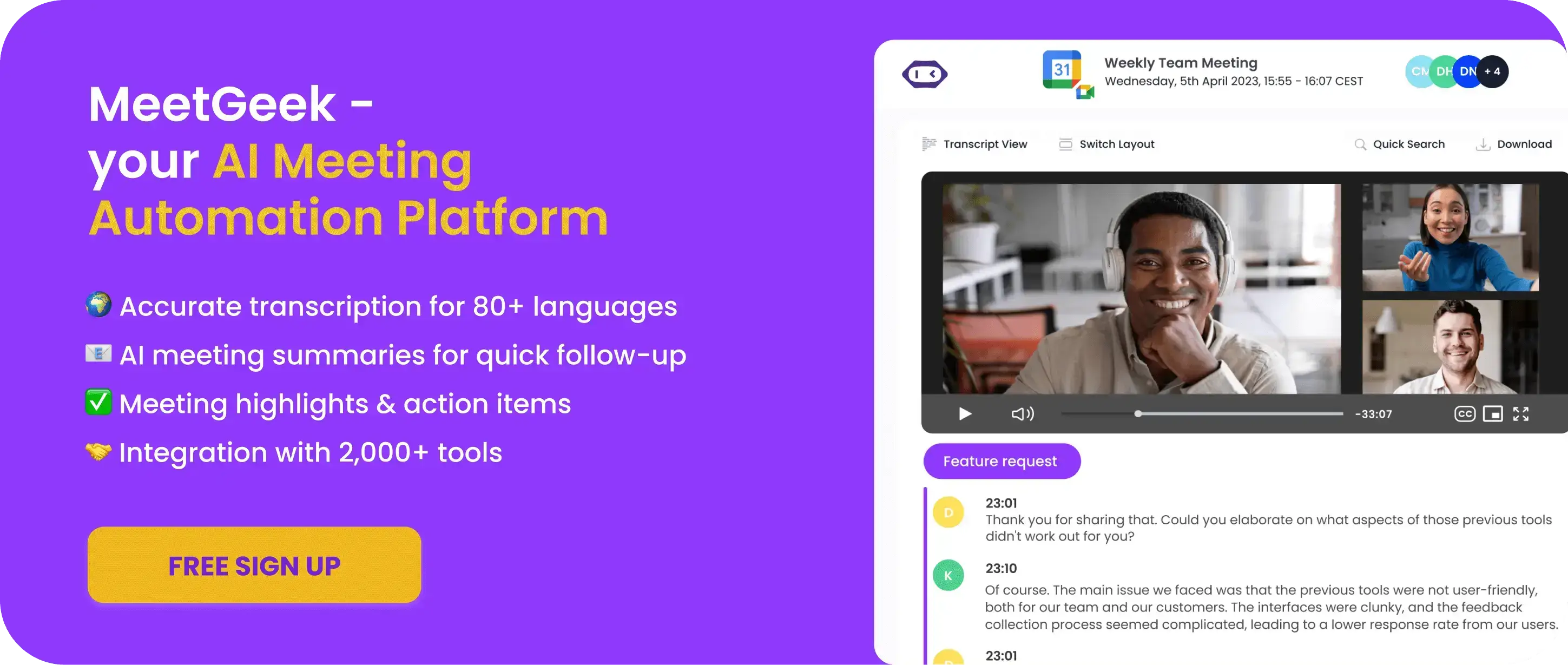
What is the successful brainstorming session agenda?
- Phrases to use when starting a brainstorming meeting:
Use the phrases can serve as icebreakers to establish a friendly and collaborative atmosphere at the start of your brainstorming meeting. Encourage participants to feel comfortable and confident when sharing their ideas, and emphasize the value of open-mindedness and creative thinking.
- "Remember, there are no bad ideas during brainstorming. Every suggestion can spark inspiration and lead us to something extraordinary."
- "Feel free to build upon each other's ideas. Collaboration and synergy are key to unlocking our collective potential."
- "Be bold and challenge the status quo. We're here to disrupt, innovate, and make a real impact."
- "Our objective today is to brainstorm and come up with creative solutions to [specific problem/challenge]."
- Brainstorming outline template:
A successful brainstorming session agenda typically follows a structured approach to ensure productive and focused discussions. While the specific agenda may vary based on the goals and context of the session, the following elements are commonly included:
- Define the problem and context
Clearly articulate the challenge or problem that needs to be addressed. Encourage participants to ask questions and seek clarification to ensure a shared understanding of the problem.
Here are some example phrases to use:
- "Let's dive into the main challenge we're facing. As a team, we need to brainstorm ideas on how to improve our customer support system. Here are some key points to consider..."
- "Our goal today is to come up with innovative marketing strategies to reach a new target audience. Before we begin, I'll provide you with some data and insights to guide our brainstorming process."
- Goal-setting and Warm-up:
Introduce the goal of the session and what are the expected outcomes. Use examples of icebreakers above to create a positive and collaborative atmosphere. If done right, these two steps will guarantee the best results for your brainstorming session.
- Idea Generation Phase:
Allocate sufficient time for participants to generate ideas. Encourage a free flow of thoughts and emphasize the importance of quantity over quality during this phase. However, limit the time you spend on this step, or you may become too engrossed in generating endless ideas and find yourself lacking time to discuss the action plan.
Here are some example phrases to use:
- "All ideas are welcome here. Remember, quantity is key at this stage. Let's focus on generating as many ideas as possible. Don't worry about evaluating them just yet."
- "Who would like to share their idea first? Remember, there are no bad ideas. Let's build upon each other's suggestions and think outside the box."
- Group Discussion and Evaluation:
Transition to a group discussion of the ideas generated during the previous step.
Here are some example phrases to use:
- "Let's take a closer look at some of the ideas we've generated. What are the potential advantages and challenges associated with each?”
- “How can we refine or combine different ideas to create stronger solutions?"
- Prioritization and Selection of Ideas:
After generating a substantial list of ideas, it is important to facilitate a process to prioritize and select the most promising ones. This can be achieved through voting, ranking, or other decision-making techniques. To estimate the priority, outcome, and costs of every idea, use different approaches.
Below you can find some popular brainstorming techniques to prioritize ideas.
- Action Planning and Assigning Responsibilities:
Identify actionable steps required to implement the selected ideas. Break down the ideas into tasks, set deadlines, and assign responsibilities to individuals or teams. Ensure that the action plan is realistic and achievable within the given constraints.
Here are some example phrases to use:
- "Now that we've explored a range of ideas, let's focus on selecting the most viable ones. Which ideas do you believe have the highest potential for success? How can we prioritize and allocate resources to implement them effectively?"
- "Based on our discussion, let's identify the top three ideas that align with our goals. Who would like to take the lead on each idea, and what are the next steps for implementation?"
- Summary and Next Steps:
Conclude the session by summarizing the key decisions. Emphasize that the session was recorded with MeetGeek and make sure that the transcript is sent to every participant to be able to recall the ideas after the call.
Here are some example phrases to use:
- "Before we conclude, let's quickly recap the main ideas we've selected. I'll send out MeetGeek meeting minutes for reference. Make sure to go back to it when you need to recall the context.”
- Brainstorming techniques to prioritise the ideas
- Eisenhower Matrix: The Eisenhower Matrix, also known as the Urgent-Important Matrix, helps prioritize ideas based on their urgency and importance. Ideas are categorized into four quadrants: urgent and important, important but not urgent, urgent but not important, and neither urgent nor important.
- Weighted Scoring: In weighted scoring, each idea is assigned a score based on predetermined criteria. The criteria can be weighted according to their importance, and the scores are summed up to rank the ideas. This technique provides a quantitative approach to prioritization.
- Impact-Effort Matrix: The Impact-Effort Matrix helps prioritize ideas by considering their potential impact and the effort required to implement them. Ideas are plotted on a two-dimensional grid, with high-impact and low-effort ideas being prioritized.
- Kano Model: The Kano Model helps prioritize ideas based on customer satisfaction. Ideas are categorized into five groups: attractive (delighters), one-dimensional (basics), must-be, indifferent, and reverse. By understanding customer preferences, ideas can be prioritized to maximize customer satisfaction.
- Cost-Benefit Analysis: Cost-Benefit Analysis involves evaluating the costs and benefits associated with each idea. This analysis considers the financial, time, and resource implications of implementing the ideas, allowing for informed decision-making and prioritization.
- Pareto Principle (80/20 Rule): The Pareto Principle states that 80% of the effects come from 20% of the causes. Applying this principle to idea prioritization means identifying the vital few ideas that will have the most significant impact and focusing on them.
- Nominal Group Technique: The Nominal Group Technique involves a structured group discussion where participants individually generate and rank ideas. The group then combines and evaluates the ideas, facilitating collaborative decision-making and prioritization.
- Multi-Voting: Multi-voting is a technique where each participant is given a limited number of votes to allocate among the ideas. Participants can distribute their votes based on their perceived importance, and the ideas with the highest vote counts are prioritized.
These techniques offer various approaches to prioritize ideas after a brainstorming session, allowing you to focus on the most valuable and feasible concepts.
Integrations offered

Get Started with MeetGeek

.avif)

